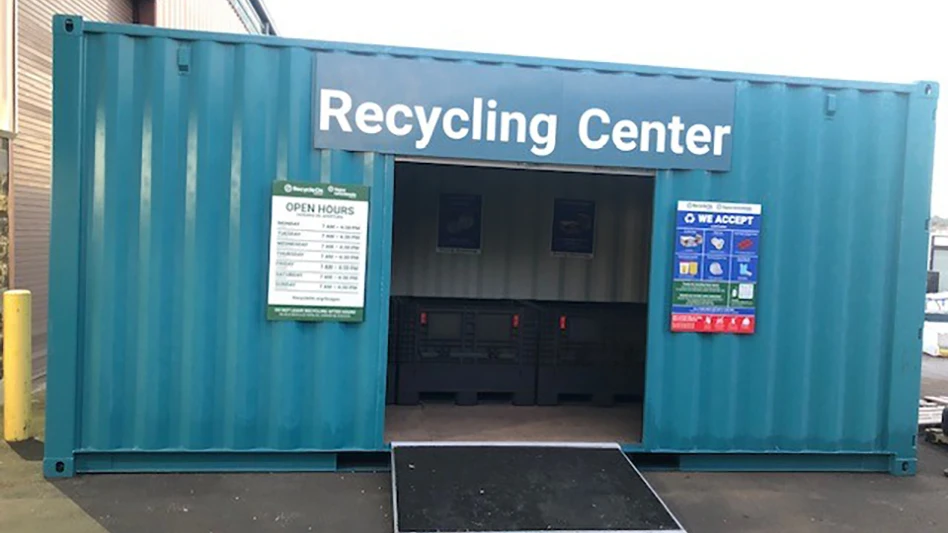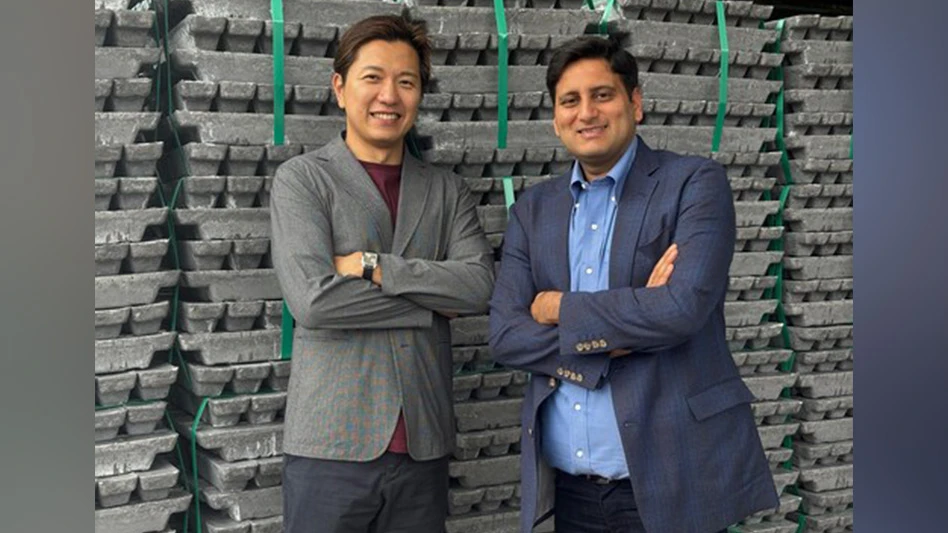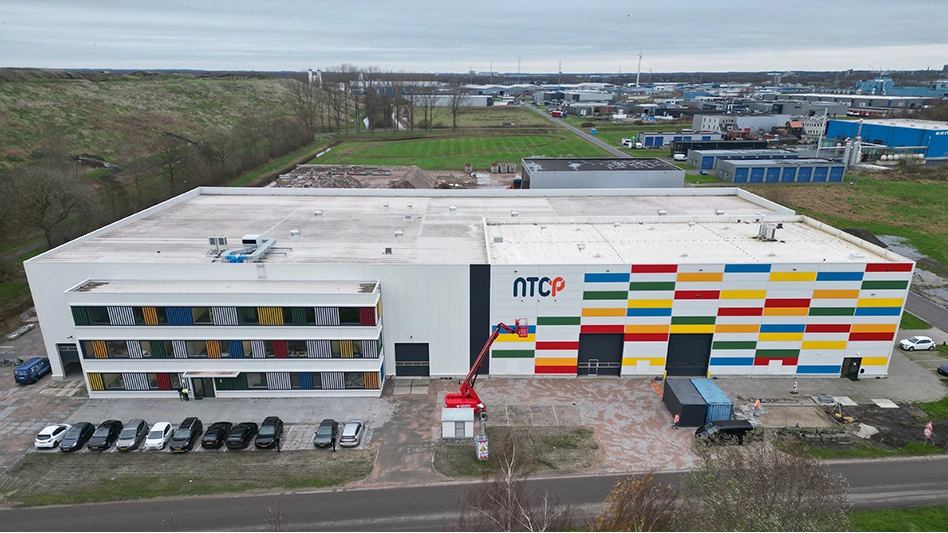 More than 6,000 attendees and some 300 exhibitors convened in Las Vegas April 15-19 to attend the Institute of Scrap Recycling Industries’ (ISRI) 2012 Convention and Exposition, held at the Mandalay Bay.
More than 6,000 attendees and some 300 exhibitors convened in Las Vegas April 15-19 to attend the Institute of Scrap Recycling Industries’ (ISRI) 2012 Convention and Exposition, held at the Mandalay Bay.
These record showings coincided with the association’s 2012 convention theme tagline to “Be More.” The association had said it hoped the programming would offer more information, foster greater profitability, and encourage attendees to be more entertained.
And by all accounts that’s largely what attendees were able to do. Billed as the largest worldwide gathering of scrap recyclers, the annual event included more than 40 general sessions, spotlights and workshops. This year the association also added more supplier-hosted Toolbox Talks and for the first time offered a convenient ISRI Convention App for smartphones and tablets. The app provided users with program information, maps, access to exhibitor and attendee lists and—you guessed it—more.
|
Superfund Case Study In the well-attended presentation “Superfund Protection—A Case Study,” attendees heard from Scott Horne, general counsel/vice president of government relations for ISRI, and Donald B. Mitchell Jr. and Arent Fox, both of Arent Fox LLP. They discussed how recyclers can protect themselves from Superfund liability. Fox outlined how recyclers in the U.S. can prove they are not liable by demonstrating the five factors designed to identify Bona Fide Recycling Transactions. The session also explained ISRI’s SREA Reasonable Care program, which allowed members to purchase reasonable care compliance program reports through April 30, 2012. — Kelley Stoklosa |
Opening Lessons
At the Tuesday morning Opening General Session, ISRI Convention Chair Bruce Blue told the crowd the show featured the largest exhibit hall in ISRI history, with some prospective exhibitors even being put on a waiting list.
“Very few shows bring in the number of purchase orders that an ISRI show brings,” said Blue, who also is owner of Freedom Metals, based in Louisville, Kentucky.
John Sacco, ISRI chair and vice president of Sierra Recycling and Demolition Inc., Bakersfield, Calif., remarked that all 50 states were represented, as well as 51 different countries, “spanning six continents.”
Sacco, preparing to turn over his role as chair, discussed major lessons he’s learned over the last two years. First he said, ISRI members need to be more proactive in their operations, and he urged attendees to be more aware, particularly with regard to the numerous cases of flow control seen by cities and counties. Sacco also said recyclers need to be wary of apathy and refuse to turn a blind eye to regulatory proceedings. He referred to last summer’s EPA proposal to change its definition of solid waste, to the consternation of many in the industry. “We are the eyes, ears and without a doubt the voice of the recycling industry,” he said. “We must never be silent.”
Next, Richard E. Abrams, chair and CEO of Consolidated Scrap Resources, Inc. was honored with ISRI’s Lifetime Achievement Award.
Abrams, a third-generation recycler, has spent more than half a century in the recycling industry. His grandfather Ben had founded B. Abrams & Sons, a scrap recycling business, in 1904. In 1999, B. Abrams merged with L. Lavetan & Sons of York, Pa., forming Consolidated Scrap Resources Inc. (CSR) of York, Pa.
Abrams became the first sole president of ISRI, which was formed by the 1987 merger of the National Association of Recycling Industries, based in New York, and the Institute of Scrap Iron and Steel in Washington, D.C.
Abrams, who was instrumental in the merger, during his term confronted many challenges on behalf of the recycling industry, particularly in regard to amending Superfund legislation. “We have to remain a member-driven organization,” said Abrams, in accepting his award. “Free and fair trade is an idea that’s best for all of us.”
The keynote presentation of the opening general session was delivered by Michael Maslansky, CEO of consulting firm Maslansky, Luntz & Partners, based in New York and Washington D.C.
 Maslanski brought to the stage a 20-member consumer panel to discuss their opinions of the recycling industry and how well its various messages are resonating with consumers. Panelists were asked to rate specific recycling industry messages in real time for the audience. “This is research with out a net,” Maslansky remarked. “We have no idea what’s going to happen here.”
Maslanski brought to the stage a 20-member consumer panel to discuss their opinions of the recycling industry and how well its various messages are resonating with consumers. Panelists were asked to rate specific recycling industry messages in real time for the audience. “This is research with out a net,” Maslansky remarked. “We have no idea what’s going to happen here.”
Specific messages considered by panelists included the perceived honesty of scrap recycling operations, consideration of a world without recycling, and how the industry has invested to help local communities.
In the Spotlight
Well attended sessions during the convention were the several “Spotlight” sessions on major commodities and on the economy in general.
The association brought back its Spotlight on the Economy session. For the session, journalist Adam Minter, based in Shanghai, China, moderated a program featuring economist Jason Schenker, president of research and consulting firm Prestige Economics, LLC, based in Austin, Texas, and Stefan Schilbe, chief economist of commercial bank HSBC Trinkaus & Burkhardt AG headquartered in Düsseldorf, Germany.
Minter kicked off the program with an overview of China’s economic situation. He said that notwithstanding local government debt that has ballooned and an underground banking crisis, China’s economy is one “that tends to muddle through.” Furthermore, Minter pointed to the political risks related to China’s changing political climate: the first leadership change in 10 years, along with a concern that labor prices are on the rise.
Schenkert delivered forecasts for the U.S. and global economies. He predicted modest global expansion but the slowest increase in Chinese GDP seen in more than a decade.
Schenkert also said he believed 2012 would offer U.S. GDP growth of below 2 percent. He offered slightly more bearish expectations for growth compared to recent IMF growth estimates, but along similar lines. His forecasts were based on a number of economic threats, including the unresolved European sovereign debt situation, the Fed’s anticipation of exceptionally low rates for some time, high levels of geopolitical risk, and high oil and petroleum prices.
“In general our debt situation is so bad that we are going to see the dollar slide against most major currencies,” said Schenkert, “gradually this year but more in the future.”
Schenkert also forecast stronger metals growth “in the back half of this year and next year,” although metals pricing going forward would be generally down a bit from 2011. Shenkert forecast copper prices for 2012 at $3.95 per pound and aluminium LME spot prices at $2,270 per tonne.
In summary, Schenkert said demographics plus increases in global wealth and globalization will drive commodity demand growth and prices going forward.
Schilbe referred to general stabilization worldwide but with regional divergences, referring to serious economic problems in the Euro zone. He compared the already stable German economy with the contracting economies of countries such as Spain and Italy. He said that leading indicators in China have come down as well.
“This extreme monetary policy we see all over the world has the potential to build new bubbles,” Schilbe said, referring to expanded balance sheets of Central Banks in Europe and Japan.
“The European economy will grow very slowly over the next couple of years,” he said.
Latest from Recycling Today
- US Steel to restart Illinois blast furnace
- AISI, Aluminum Association cite USMCA triangular trading concerns
- Nucor names new president
- DOE rare earths funding is open to recyclers
- Design for Recycling Resolution introduced
- PetStar PET recycling plant expands
- Iron Bull addresses scrap handling needs with custom hoppers
- REgroup, CP Group to build advanced MRF in Nova Scotia





